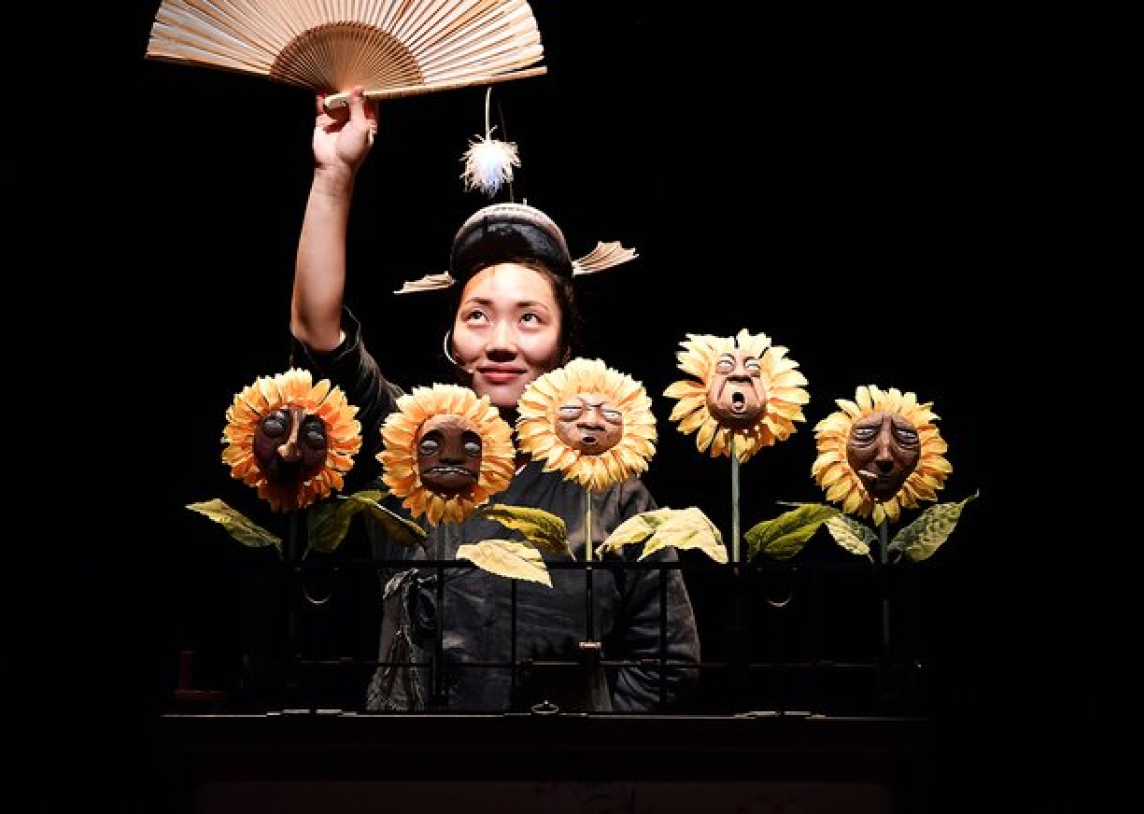News
Puppet Pansori Sugungga
theSpace @ Niddry Street
5- 20 August,, 6.05pm
An untraditional staging of classical Korean themes using the traditional puppetry of pansori and live music. Witty and creative, and appealing to adults and children alike, Moksung brings international influences to traditional forms. Puppet Pansori Sugungga gathers the residents of two worlds together to explore their prejudices, as a single performer uses puppets, various theatrical objects, stage lighting and non-traditional music instruments to create a beautiful, emotive performance. Puppeteer and object artist Suho Moon and pansori performer Eunsil Noh create work around the pansori epic chant, which is listed as part of Korea’s UNESCO intangible cultural heritage.
Can you tell me a little bit about the traditional form of puppetry?
The marionette is used as the main puppet, while the Automata and Kinetic dolls are newly created and used for describing the scenes and the background of the play. The most characteristic puppets of the play are Jijeon and Bupo, which are Korean performance objects that can express the scenery of the sea beautifully and imaginatively.
How did you come to work in this particular medium?
When performing pansori overseas there were many verbal obstacles. So, the alternative that I thought of was to present an image using a puppet. By using the puppet, it was possible to deliver the intimacy to the audience and easily recognise the implications and language of the image, and to expand the movements and expressions of the performer in a variety of ways.
What kind of audiences do you aim towards, and what reactions do you get?
There isn’t an age limit for our performance, so we hope there will be a lot of family audiences. In fact, there were many family audiences in Korea and abroad, and we were able to draw a lot of reaction from the crowds. It also contains humour, so we hope the audience will enjoy the performance and that they get the opportunity to learn about traditional Korean pansori.
How did you decide to use 'non-traditional' music, and how far does this react with the traditional puppetry practice?
Since our team members are international, it seems that each field of art has naturally evolved and the overall parts of the performance have been combined.
In the traditional Pansori stage, the Gosu (the drummer), who shares the stage with a singer, is accompanied. It is a role that plays rhythms in songs and stories, and they perform together from time to time.
Among many instruments, the cello was used because it can be utilised like a percussion instrument, much like with the role of the Gosu. Music using the cello is mainly classical and creative, but it can be used without limitation in addition to traditional music because it matches the imagery depicted in the play. It has also been used because audiences overseas are watching and so we would like to make them feel comfortable by playing familiar classical music.
Does the cultural status of puppetry have a particular impact on your process of creation, or the reception?
Pansori and puppetry are very similar. In a puppet theatre, images are presented through the puppet, while Pansori’s images and stories are presented and expanded through a fan. In addition, the unique singing method of telling the story and singing together are of a similar structure. Although they are different nationalities’ art forms, the influence from the genre of puppetry enables the expansion of the traditional genre of Pansori to the global stage.
What do you hope to bring to Edinburgh audiences?
It seems to be a time when showcasing other cultures has been diminished due to COVID-19. The content of the Sugungga story we perform depicts other cultures and misunderstandings and prejudices that come from it, which is why this performance is so important.I hope it's a special moment to broaden our audiences understanding of the "Other world" after watching the performance and that they understand what we're trying to say.

